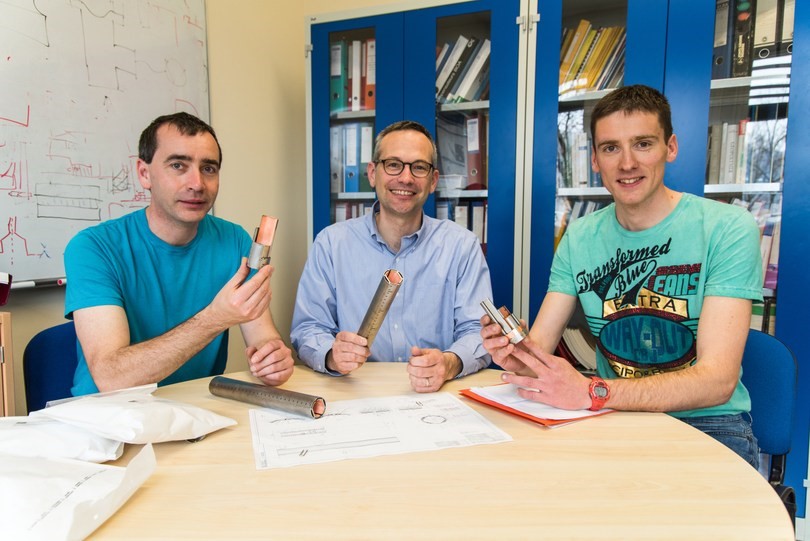![]() First hardware for FCC: Designing novel beam screens system
First hardware for FCC: Designing novel beam screens system
by Panos Charitos and Cedric Garion (CERN)

For most people vacuum refers to “nothing”, but for an experimental particle physicist it is what enables a particle beam to travel through an accelerator without being scattered away, therefore it has an utmost importance in the performance of a particle collider.
The vacuum pipes of the FCC-hh not only have to maintain an ultrahigh vacuum over 100 km of underground tunnel but must also be able to shield the cold masses from unprecedented levels of synchrotron radiation in proton accelerators.
This radiation may extract electrons and gas molecules from the pipe wall, and so, deteriorate the vacuum, increasing the scattered particles which could lead to heat up or damage the ultra-cold superconducting magnets that keep the high-energy particle beams on track.
Francis Perez, head of accelerators division at ALBA synchrotron, and Paolo Chiggiato, head of the CERN Vacuum, Surfaces and Coatings group, are leading the cryogenic vacuum work package in the EuroCirCol project that gathers different institutes (ALBA, ANKA, CERN, CIEMAT, INFN and STFC).
Similarly to the LHC, the FCC-hh will have a beam screen inserted in the vacuum pipes to intercept the synchrotron light at cryogenic temperatures, with a flow of helium gas circulating in cooling channels to evacuate the heat load. However, the higher power density of the synchrotron radiation expected in the FCC-hh calls for a radically different design.
The team have proposed a novel vacuum system with improved heat transfer, lower impedance, improved pumping, and feasible manufacturing. The design also integrates a new method to mitigate the formation of electron clouds in the proton beam. This method, developed by the STFC and University of Dundee in the UK, consists on modifying the morphology of the beam screen surface by laser treatment to minimize the multipacting of electrons on the screen wall. The team has modelled the new design with dynamic vacuum, thermal and mechanical simulations, it is currently producing a prototype and investigating the process to manufacture the beam screens in the large scale.
The next steps include experimental tests of the new beam screens in the ANKA synchrotron in Karlsruhe. Providing a good approximation of the expected FCC-hh photon spectra, the measurements at ANKA , carried out at room temperature in a first step, will help to determine the heat load distribution, the desorption yield as a function of photon dose, and the photoelectron yield.
The first measurements will probably take place in 2017. However, important challenges remain ahead, like measuring the electron cloud density and the beam impedance. Further tests will assess the mechanical integrity of the beam screens after a magnet quench, the low-temperature gas adsorption on the laser treated surfaces, the generation of dust, etc.
In summary, the new concept for the beam screen of the FCC-hh fulfils the stringent vacuum requirements, easily removes the much higher than LHC synchrotron light power, and integrates e-cloud suppression. The preliminary design has been tested with mechanical, thermal, and gas density simulations, and the first prototype is ready for further tests while a two meter long version will be manufactured by end 2016.
